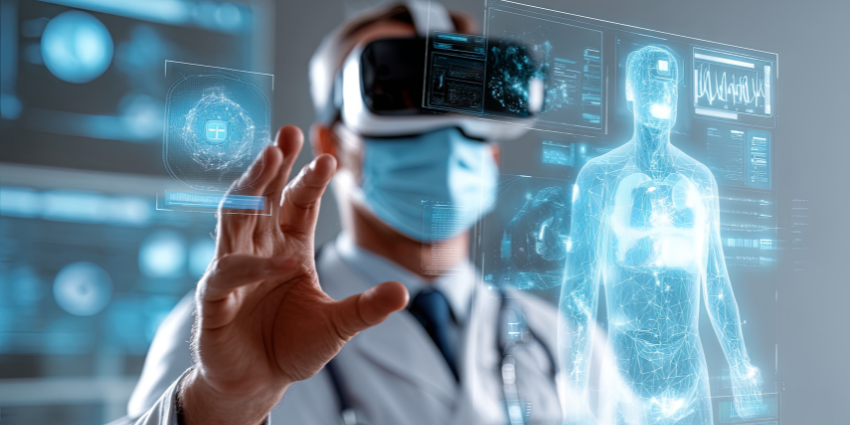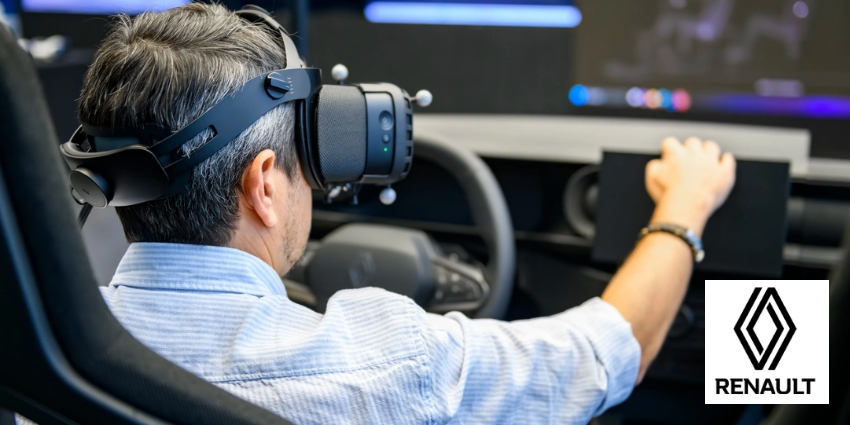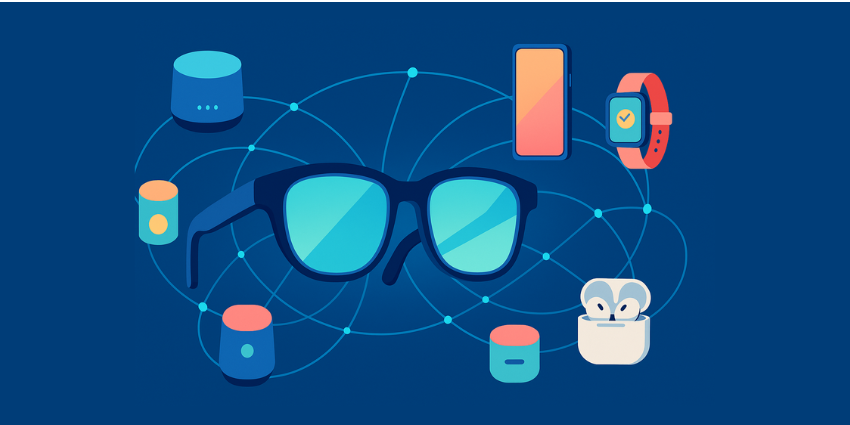England’s National Health Service will launch an ‘online hospital’ in 2027 – a signal of significant digital transformation in the healthcare sector. For XR vendors, this isn’t just a healthcare milestone – it’s a market signal.
What is the NHS Online Hospital?
Rather than waiting for a face-to-face appointment, the plan will enable patients to communicate with a specialist from the comfort of their home.
Known as ‘NHS Online’, the digital hospital is set to deliver the equivalent of 8.5 million appointments and assessments in its first three years.
But this impact could be even greater with the adoption of XR technology to enhance telehealth services and workplace communication.
The Opportunity for XR Providers
The NHS Online Hospital represents a key step forward in normalizing telemedicine and the adoption of advanced technologies for healthcare. As more medical bodies explore how technology can boost patient experience, this is where XR vendors can step up.
It is a prime opportunity to prove that XR technology can provide value in terms of collaboration, training, and therapeutic services. Not only does healthcare represent a major market for vendors to capture, but it is an uncharted territory where there is no dominant XR provider currently.
Ahead of the launch of the NHS Online Hospital, we explore the opportunities for XR solutions to make a difference in a healthcare setting:
AR for Clearer Virtual Consultations
When patients and clinicians start a consultation via video call, it can be difficult to communicate how certain medical concepts or anatomical details are communicated effectively.
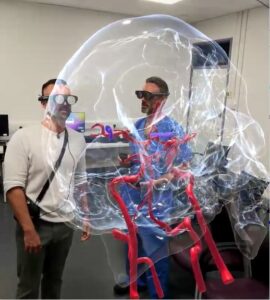
This creates an opportunity for vendors to provide AR-powered glasses – where patients can view 3D models of affected areas to get a better understanding of an upcoming procedure.
The NHS trust Imperial College Healthcare have already started inviting neurosurgery patients to view 3D anatomy models before surgery “to help them better understand the planned procedures”.
With remote patients now in need of these more effective forms of communication, vendors have an opportunity to highlight how immersive experiences can boost patient awareness and create that feeling of an in-person consultation.
XR for Remote Collaboration & Diagnostics
One of the core features of the NHS Online strategy is connecting patients with available healthcare specialists – who may be on the other side of the country.
The benefit of this system is that specialists who have more availability can be assigned new patients and help reduce the workload of a similar specialist who works in an oversubscribed department.
This system will rely on collaboration between this distant specialist and the local Community Diagnostic Centre where the patient undergoes tests, scans, or procedures close to home.
For vendors, this a prime opportunity to highlight how XR technologies can support workplace collaboration.
For example, with XR technology, specialists and local clinicians can jointly view patient scans to annotate, plan, and then rehearse procedures together.
And these use cases aren’t just speculative. A Forrester study commissioned by Meta found that 79% of healthcare decision makers identified ‘telemedicine, remote collaboration between physicians’ as a future use case for mixed reality tech.
VR to Reduce Patient Anxiety
With the launch of the online hospital, we could see younger generations growing up without the familiarity of a physical hospital – leading to more discomfort and fear when they do have to receive in-person treatments.
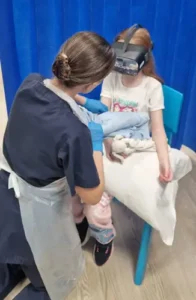
However, virtual reality technology can play a role in ‘distraction therapy’ where patients can get lost in immersive digital worlds whilst undergoing potentially uncomfortable procedures.
For example, the case of six-year-old Coby, who has been receiving radiotherapy care at a physical hospital in Manchester.
His mother told the BBC that “any fear has been taken away” because the VR headset enabled him to explore ‘outer space’ whilst receiving treatments.
This form of distraction therapy was launched to test whether VR tech can reduce anxiety among patients receiving cancer treatment. Patients can also reportedly use the headset during injections, dressing changes, and blood tests.
Isla Gault, who had taken part in VR distraction therapy even said:
“I was enjoying the VR so much that I didn’t even feel the needle.”
Many people often say they hate the experience of being in a hospital, but VR technology vendors now have an opportunity to flip that on its head and associate healthcare settings with fun.
Understanding Limitations and Adoption Challenges
Any plans to integrate XR technology into a healthcare system will inevitably raise certain challenges. Firstly, these devices must not compromise medical confidentiality and privacy, holding firm against cyberattacks.
Secondly, these devices are still not commonplace in many homes – meaning patients will need to be supplied with them. This will inevitably raise logistical and monetary expenses for healthcare organizations.
Thirdly, there is the education challenge. Both clinicians and patients will need to be taught how these XR-enabled processes will work, adding even more demands on healthcare providers.
Tech vendors will play a key role in addressing these challenges. The post-purchase period will involve a heavy focus on integrating XR devices into existing processes, whether it’s cybersecurity strategy, availability, or getting staff onboard with the change.
But if these limitations can be sufficiently addressed, the upside for an online hospital is clear. The ball is now in the vendor’s court to prove how XR technology can close the gaps created by remote digital workspaces – ultimately improving collaboration & communication.
Interested in exploring how XR technology will change the future of work? Follow XR Today on LinkedIn or sign up to our newsletter to stay up to date.
